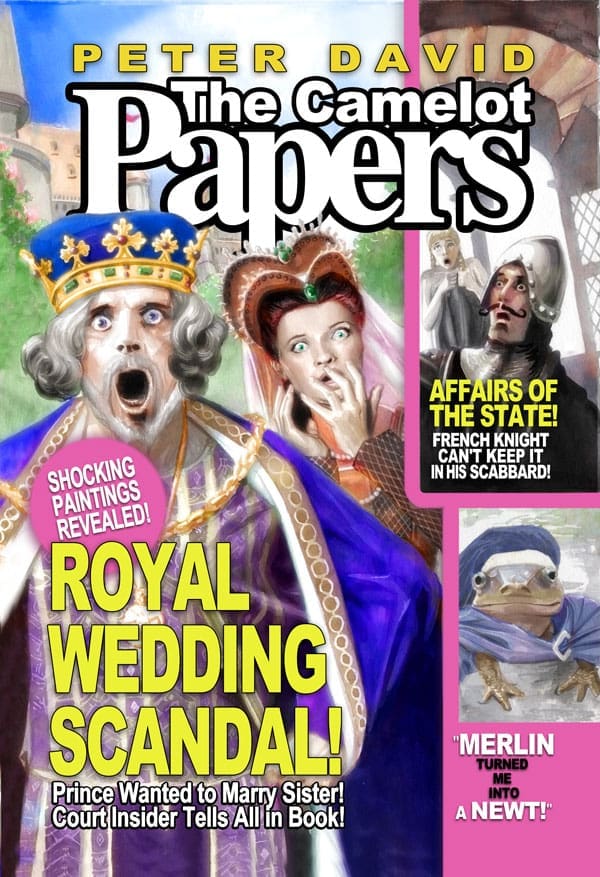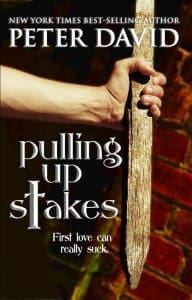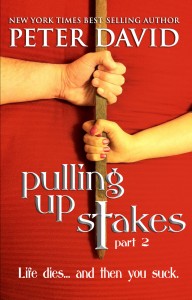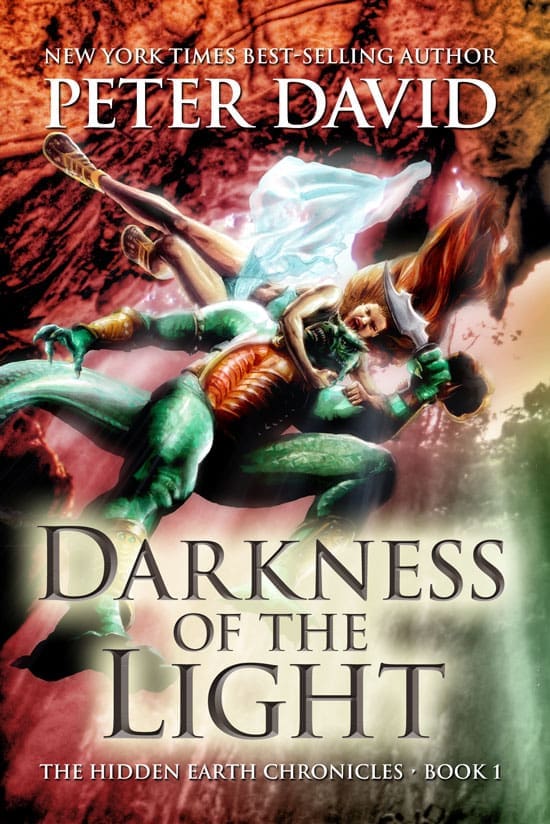 Originally published September 15, 1995, in Comics Buyer’s Guide #1139
Originally published September 15, 1995, in Comics Buyer’s Guide #1139
At a recent convention, a fan asked me what comics I like to read. I mentioned the usual: Sandman, Cerebus, The Maxx, Sin City, Bone…
But I don’t think he heard me past the first one, because he said, “Sandman?”
I said, “Yeah.”
And he asked, “What’s that about?”
Which actually prompts an interesting meditation, particularly as arguably one of the best comic series that’s ever been published winds to a close. Just what is Sandman about?
Nominally, of course, it’s about the lord of the realm of dreaming, variously known as Morpheus, Sandman, Dream, and assorted other monikers. In recent issues he has met his demise, only to be promptly replaced by another entity—or “aspect,” if you will—bearing the same name.
This, of course, isn’t how it’s done in comics. First off, Dream’s dissolution (I’m trying to avoid saying “Dream’s death” because, within the context of the series, it sounds weird) should have been part of a full DC universe crossover. The cover should have been embossed, the book should have been triple-sized, at least.
The new Dream shouldn’t have been introduced in the selfsame issue, but rather in the following month (or even the month after that), maybe even in a spinoff series.
This would have been the ideal opportunity to give Sandman a completely new look. Give him some muscles, a kick-butt gun, and an attitude. Oh, sure, he’s had an attitude until now, but it’s been very much along the lines of, “Don’t mess with me or I’ll hurt you,” as opposed to real attitude which is, “I’m gonna mess you up before you get the chance to hurt me.”
Maybe change his name to Sand Blaster. That would work.
Instead, he’s been transformed from a soft-spoken skinny albino with black hair into a softer-spoken skinny albino with white hair. Now there’s a makeover to conjure with.
In any event, that’s what one would say the book is “about.” Except that really doesn’t say much of anything, because the question itself has many interpretations. When you ask, “What is the story about?” the question could be taken to mean that one is asking for a summary of plot machinations (“A Soviet sub commander takes a silent-running submarine towards the U.S. and nobody knows if he’s defecting or launching a one-man war”) or character (“The ongoing adventures of a tough-but-poetic Boston P.I.”) or even the work’s raison d’etre (“It’s a sequel to the movie Willow“).
But true works of quality are actually about something in terms of connecting theme, and variations thereof. And what’s great about contemplating such things is that, whereas more shallow discussions about plot or character are pretty much impossible to dispute, a story’s subtext can be studied, disputed, and put forward as opinion without an easy way of saying whether the opinion-maker is right.
Indeed, opinions can even be formed that are at variance with the author’s own intent. One would think in such instances that the author’s own views would be the definitive ones. But, when the author points it out, the academicians can simply sniff and say, “What a pity that you’re so oblivious to the content of your own work.”
(The best riff on that concept, by the way, was in Annie Hall, wherein Woody Allen finds himself stuck on a movie ticket line behind a pedantic scholar who is nattering on pompously about the theories of media analyst Marshall McLuhan. When Allen opines that the pedant doesn’t know what he’s talking about, Allen is archly informed that the know-it-all is a college professor who teaches a course on McLuhan’s work. Allen promptly trumps him by producing McLuhan himself from behind a potted plant, whereupon McLuhan proceeds to dress down the professor in no uncertain terms. Allen turns wistfully to the camera and says, in effect, “Wouldn’t it be great if life was like this?”)
So I’ve been giving some thought as to what Sandman is actually about beyond the surface elements.
I think the series, ultimately, is about control. Control in all its variations. Control over one’s body. Control over one’s life and fortunes.
Let’s start with the Endless themselves, the protagonists/antagonists of the series. It’s established that the elders are the more powerful, the more feared, even by the younger. It is not insignificant that the older and more powerful Endless are also the ones whose realms most involve control.
The eldest is Destiny. What is more controlling than that? The second eldest is Death—death, which is the ultimate control over life. Third comes Dream—who controls neither destiny nor life, but something a bit more ephemeral—hopes, dreams, aspirations.
Then there’s Destruction. Destruction results from a loss of control. Yet Destruction himself took control of his life and walked away from his duties, perhaps from seeing the inherent contradiction in trying to control that which is the end result of chaos.
The further one goes down the Endless “food chain,” the further one gets from the concept of control—and, hence, the less puissant the characters are. (Dream in one issue threatens Desire, asking whether Desire thinks s/he is powerful enough to stand up to the eldest Endless; Desire’s response is a fast “no.”)
Desire is both male and female—naturally, because desire is an equivocating emotion, particularly when a relationship becomes a struggle for control between man and woman. Her twin is Despair, defined in my dictionary as “stressing the utter absence of hope and often implying a sense of powerlessness or resignation.” The youngest of the Endless (and, by extension, the least powerful) is Delirium—the incarnation of lack of control. It is significant, I think, that in the history of the Endless, the two least in-control siblings underwent the greatest changes. (Despair “died” through unrevealed means and was replaced; Delirium was previous Delight and underwent a change, again for unrevealed reasons.) I would be curious to see whether these unrevealed histories likewise refer to losing, or trying to regain, control.
The first story arc has control as its running theme. In the very first issue, Morpheus is yanked down into the world of mortals, stripped naked, and imprisoned for nearly a century. To all intents and purposes, he’s raped. All control has been taken away from him, in a trap so comprehensive that apparently even his siblings are helpless to aid him. It can’t be that they didn’t know; one of Morpheus’ captors drops dead right in front of him. When Death shows up for him, she would see her younger brother sitting there imprisoned. But she does nothing—can do nothing—to aid him.
As with one who has been raped, Morpheus can’t even begin to describe the awfulness of the violation. (“Can you have any idea what it was like? Can you have any idea?“) And as with the rape victim (or survivor, if you will), Morpheus then attempts to regain control of his environment once more. He reclaims his various trappings and weapons, gets revenge against those whom he can.
But at the end of the story arc, he discovers that even though the outward signs of control are his once more, the knowledge of what it was like to lose control over life continues to gnaw at him. For when one has lost that control, it is impossible to live without fear that one may lose it again. The illusion of control is starkly revealed to be just that: illusion.
In Washington Square Park, Morpheus tries to describe this to Death thusly: “I had been sure that as soon as I had everything back I’d feel good. But inside I felt worse than when I started. I feel like… nothing.”
And Death—who shows great sensitivity for all the mortals she shuffles off beyond the veil—proceeds to display exactly zero patience for her own brother’s ache. She starts off the conversation by tritely asking him if he saw the film Mary Poppins (obviously not; he was imprisoned during the film’s release, as she knows perfectly well) and then, when he opens his heart to her, angrily bounces a loaf of bread off his head and calls him infantile and pathetic.
Anyone who has ever been raped and had a spouse or loved one say helplessly, “Look, it happened, it’s over, just get on with your life!” can surely recognize the sentiments Death expresses, and empathize with just how Dream must feel at that moment. Death’s reaction is utterly cold and callous, and Dream knows at that point that he’s on his own. His sister is closest to him of all the Endless, and if even she can’t understand what he’s going through, then he’s going to have to regain control all on his own.
Subsequent story arcs—even the single issues—continue the thread of control, and all the major characters therein likewise struggle for control of themselves or their surroundings.
*In the “Season of Mists” storyline, the battle is over who will control the realm of Hëll.
*Rose Walker’s story involves a threat to the control of the Dreaming itself.
*”Dream of a Thousand Cats” involves cats wanting to control the world.
*A writer seeks to control his muse by literally controlling muse, namely Calliope (who is raped by him, paralleling Morpheus’ own earlier situation).
*Dream’s best mortal friend, Hob, is a man who has taken complete control over his life’s end by stating that he will have no congress with Death.
*In “Ramadan,” the Sultan essentially turns control of his city over to Dream so that it will lose none of its luster.
*Delirium goes in search of Destruction because she wants to exert some sort of control over her family. She hopes by restoring the missing sibling, she can make the Endless back into the way they once were. Dream accompanies her because he’s lost control over a romance and hopes to run into his lost love, perhaps in anticipation of reestablishing that control.
*The award-winning “Midsummer Night’s Dream” depicts Shakespeare as completely in Dream’s control. The play we witness is one of two plays that Shakespeare is obligated to write for Dream in exchange for Shakespeare’s being given his craft as a playwright.
All of which brings us to “The Kindly Ones,” the story arc which resulted in the demise of Dream. The storyline begins with the by-now familiar theme: The three female manifestations of fate exert their control over the thread that represents the future of Morpheus himself.
As the story progresses, we find Dream, beset by the titular hellions, basically submitting to his own end rather than see his realm destroyed—but not before we see an ironic replay of Death and Dream’s encounter in the park. “Ironic” because Death is commenting that it seems that Dream has brought the entire situation on himself almost willingly, and is doing very little to fight back. He is, in essence, giving up.
Well, yeah. It’s a little late for Death to start giving him a pep talk; if she’d shown a little more dámņëd sensitivity back in the park, Dream might not have found himself at such loose ends emotionally.
The outward manifestation of the Kindly Ones ripping Dream and his kingdom apart mirrors his inner turmoil. Here is a character whose entire past, present and, presumably future, hinges on being in control. But by having control taken away from him, he can no longer function to the ideal he’s set for himself. Two reasons come to mind.
First, he continues to exist with the fear of losing control once more.
And second, his duties require him to be in control of others. He may be starting to empathize with the lack of control that others feel in his presence (all that exists in the Dreaming does so at his whim and sufferance) and, consequently, he may be seeing his own sense of helplessness from his imprisonment reflected in them, and identifying himself as the oppressor.
His existence has gone from total dominance to total uncertainty. He can’t live with it. Nor can he walk away from it. So he commits suicide.
It’s a rather sour note, really, for anyone who’s ever been violated, because it seems the message being sent is: If you can’t deal with it, then die.
Then again, we aren’t dealing with living beings. The Endless are concepts, after all, and Dream will live on in his new incarnation (even if it’s not as the dynamic Sand Blaster, more’s the pity).
Perhaps what’s happening is that Morpheus is simply taking the advice—cold as it may have been—from his sister and moving on with his “life.” And the only way to do that is to, both symbolically and literally, leave behind him the part of himself that had been violated. Excise that “aspect” of himself by killing it off. Morpheus wasn’t really capable of learning and growing. (Indeed, he rejected out of hand any observations that he was different.)
But he was capable of changing. He just couldn’t change as himself; he literally had to make himself over into someone who would carry with him the knowledge of what went before, but not bear the emotional angst. Instead of older but wiser, the new Dream is younger but wiser.
And he can take control once more.
Uh oh, I see Neil Gaiman clearing his throat from behind a potted plant. I think I’ll exert control over the column and end it here.
(Peter David, writer of stuff, can be written to at Second Age, Inc., PO Box 239, Bayport, NY 11705. And no matter what, he will continue to believe that Plippy Ploppy Cheesenose is a far superior name to Eblis O’Shaughnessy. If you don’t understand that observation, don’t ask; it’s way too involved.)





This was a really great, and touching, summary in that you’ve taken a series I’ve read a couple of times and shined a new light on it. I never considered how much of the overall plot extended from Dream’s reaction to his imprisonment as I’m usually just caught up in the individual tales.
Hy Bender conducted a series of interviews with Neil Gaiman and “The Sandman Companion” was the end result of it. I guess that’s the “stepping from behind a potted plant” that you expected, Peter. In any case, I enjoyed reading your summary of the series and I got the “alternative to Eblis O’Shaughnessy” observation. I guess Delerium is your favorite of The Endless. Good choice.
.
But I don’t think he heard me past the first one, because he said, “Sandman?”
.
Yeah, that one was blowing my mind a lot back then. I’m looking forward to every issue like mad and just about going nuts waiting for the next issue in the final story arc and the response I got from most people when I mentioned it was blank stares.
Christ, has it really been the better part of *two decades* since SANDMAN ended?
.
I am so fûçkìņg old …
I’m not sure I agree with all of this, but it’s food for thought. I’d be interested to see what Peter’s thoughts on the series as a whole are *now*, since the story wasn’t quite finished when he wrote the above, and there’s now been twenty years for his thinking to crystallize or evolve.
c. 1993, I remember discussions in the rec.arts.comics.* newsgroups about giving Sandman its own newsgroup. I genuinely didn’t understand why the Marvel comics villain would generate so much discussion…
Nowadays, I have trouble trying to summarise what “The Unwritten” is about, since the premise isn’t really the point of the series.
Sandman is my all time favorite comic book. According to Gaiman himself, it is about change. (Endless Nights intro)
“…and it appears, not a moment too soon.”
.
Now I have images of the Endless as various incarnations of the Doctor. Fitting, I guess, given that Gaiman recently wrote a Who episode.
so…this was written nearly 16 years ago… has your “take” on the series or storyline…changed since then? I know sometimes I revisit and old book or story or movie and see a new thing….
The Marshall McLuhan bit is sadly all too often true. Several years back, the then still-living Dr. Isaac Asimov was at an NYC convention where he happened upon a small group of people with one individual going on about the true meaning of a story and how it had evolved in the course of writing and how underlying subtext … and so on.
Finally Asimov couldn’t contain himself any more and gently corrected the individual by stating unambiguously that it was all about … and that was it.
The chap would have none of it and finally stated he was a professor at [name of the university escapes me] but that he’d been teaching Literature for several years and thus was well placed to make these assertions about the story and who was this newcomer to say otherwise.
Asimov introduced himself, finishing with “… and I wrote the story.”
To which the professor replied “Just because you wrote it, what makes you think you know what it’s really about?”
How does one counter this, without using a baseball bat anyway?
Really? Nice anecdote! And one that might have inspired Asimov himself. He wrote a story about a couple of college professors in the future, one of physics, the other of literature, where the physics man brings Shakespeare to their time with a machine, and the literature professor flunks him in his Shakespeare 101 class, not knowingly.
At some point, I came across a quote from Neil Gaiman where he responded to a question asking him to summarize what THE SANDMAN was about, in 15 words or less:
“The Lord of Dreams learns that one must change or die, and makes his choice.”
(Gotta love a writer using the full word count available.)